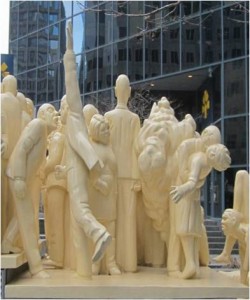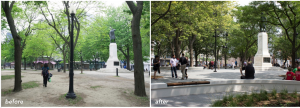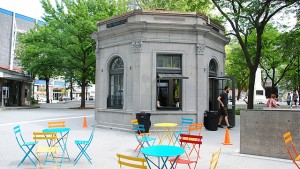
As befitting a young nation, where the romantic myth of a vast country united by railway and internationally connected through the port of Montreal, Charles Comfort’s bas-relief friezes [1] for Montreal’s Central Station (completed in 1942) were commissioned as an integrated artwork extolling the history, resources, technology and culture of Canada. Images of indigenous people figure within the context of a national narrative of Canada’s history and future, but in the case of Comfort’s mural they are not depicted as active participants in the cultural and technological imagery of a modern Canada. There are only three images of indigenous people in the two murals that are located at each end of the station’s concourse. They are depicted as historical and exotic figures. These are modernist images of “primitive people in civilized spaces,” [2] are not depicted in the segments of Comfort’s mural that depict industrial, technological, scientific or culture activities and achievements. These images of remain on the margins of the murals – and on the margins of a modern Canada.

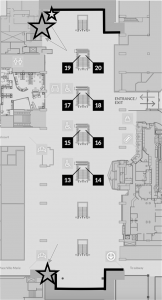
Comfort’s mural is a cultural artifact of nation building, the act of a creation though integrating ideology, creation of an integrated society, and the creation of a functioning state apparatus. This cultural artifact (i.e. Central Stations mural) is one that reduces the images of the citizenry of Canada into a homogenized art deco universal style, a stylized visual mythology of nationhood. The images of indigenous people identify here as primitivism carved out in the streamlined surfaces and contours of white stone,
These images of mural people filtered through the stylistic tropes of modernism and Art Deco are images of ambivalence, as “ colonial signifiers of authority.” [3] The reductive and modernist image of the indigenous person within this culturally Euro-centric tableau is consigned to history, and is visually erased from the mural’s (and hence, the nation’s) “present” and future even
[1] Homi Bhabha, The Location of Culture. (London: Routledge, 1994), 153.

In considering how to enact an intervention with Comfort’s mural, and the imagery of one Innu and one First Nations figure – or barely do, problematically – in the context of the murals “cultural work” as a public work of art of nation building, I plan to make a modest intervention which will take the form of a simple infographic distributed or surreptitiously inserted into the free newspapers, and left randomly found the benches and cafes in Central Station.
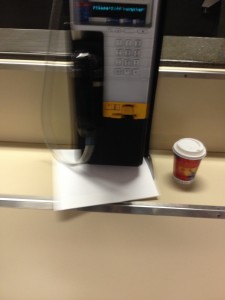
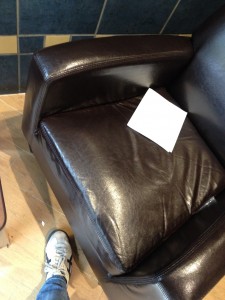

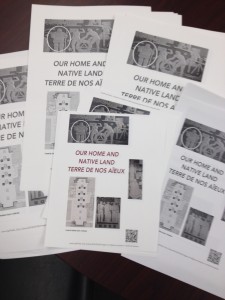
The station is essentially an ambivalent and interstitial site for commuters, the platform access situated in stairwells leading to the underground platforms of inter-city and suburban trains. The mural, if noticed at all due to its high location, is probably viewed in fragments. The opportunity of actually altering the mural itself is slim, if not illegal or would require a time consuming amount of gaining approval. My intervention will take place at concourse level, thus something tangible that will be experienced by the people who move through the station My intervention flyer incorporates a diagram of the murals with the scant images of aboriginally and highlight their minimal presence in the mural points out the lack of presence of indigenous people and of how our historical public artworks of nation building have neglected to represent all Canadians.
[1] Designed by Charles Comfort and executed by Montreal stone carver Sebastiano Aiello.
[2] James Clifford, Routes: Travel and Translation in the Late Twentieth Century. (Cambridge, MA: Harvard UP, 1997), 197.
Clifford here is quoting Coco Fusco, a Cuban-American artist and Guillermo Gómez-Peña, a Chicano artist Undiscovered Amerindians Visit the West. The performance was created in response to the quincentenary anniversary of Columbus “discovery” (quotation marks mine) of America. In their performance they dressed in improvised “primitive” clothing and performed a pastiche of what would be considered primitive activities and rituals.
[3] Homi Bhabha, The Location of Culture. (London: Routledge, 1994), 153.

 The intervention’s aims are to express silenced voices and combat ethnocentricity, engage and criticize the concepts of western culture and superiority. Additionally the hope is to remove focus from unsightly art.
The intervention’s aims are to express silenced voices and combat ethnocentricity, engage and criticize the concepts of western culture and superiority. Additionally the hope is to remove focus from unsightly art.

